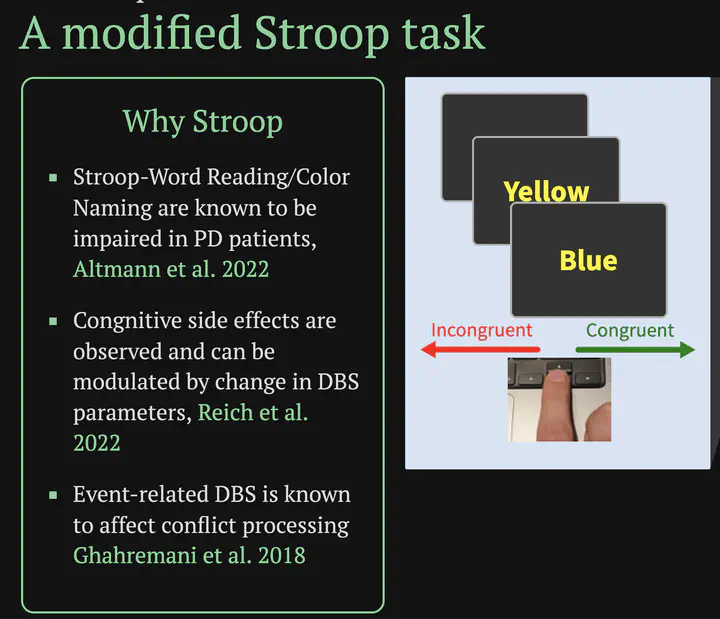Stroop metric in modified task
Connecting behavioral scores derived a keyboard based Stroop task to metrics from classical Stroop tests

The Stroop effect is a well studied phenomenon in psychology. It is often used in cognitive neuroscience to study attention and cognitive control. In a typical experiment, subjects are presented with a word that names a color (e.g., “red”, “blue”, “green”) which is then either printed in the matching the word (e.g. “red” in red) for congruent trials, or in a different color (e.g. “green” in red) for incongruent trials. In the classical version of the Stroop task, participants are asked to read the word or name the color of the ink for multiple words written on a card, with the aim of completing as many as possible in a given fixed time window. We adopted a similar task for researching the Stroop effect under the impact of deep brain stimulation for patients with Parkinson’s disease. The adopted version uses a keyboard to answer whether a single word displayed on a screen is congruent or incongruent. It is yet unclear how metrics of the adopted task, e.g. reaction speed, reaction onset, accuracy, etc., relate to the classical Stroop scores.
Objective
A first attempt to relate the scores of the two different Stroop tasks could be achieved by collecting scores from healthy participants doing both tasks in a single experimental session. Then, both scores would be related e.g. by means of generalized linear models.
Task would therefore comprise of:
- Data collection by conducting experiments with healthy participants
- Analysis of behavioral scores from the two tasks
Skills required
- Basic knowledge in statistical modelling (with scarce data)